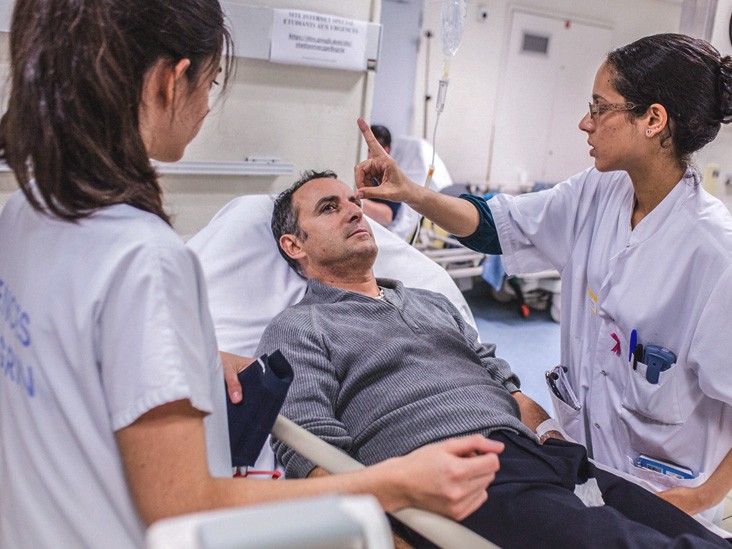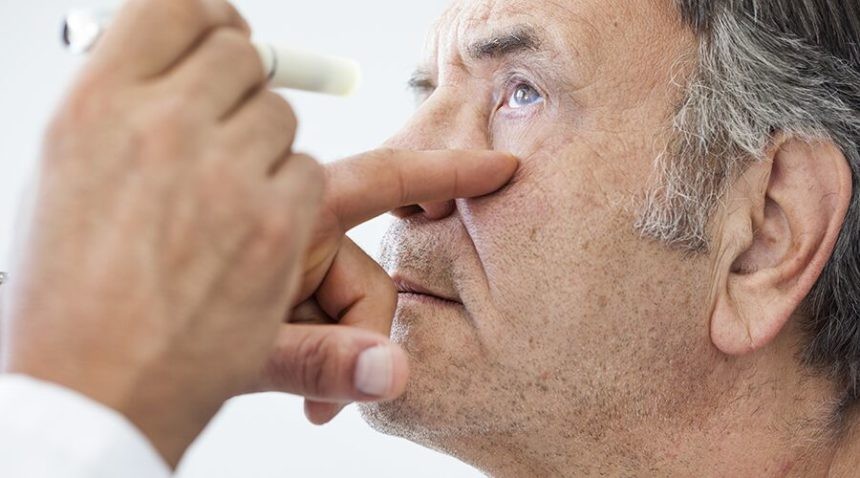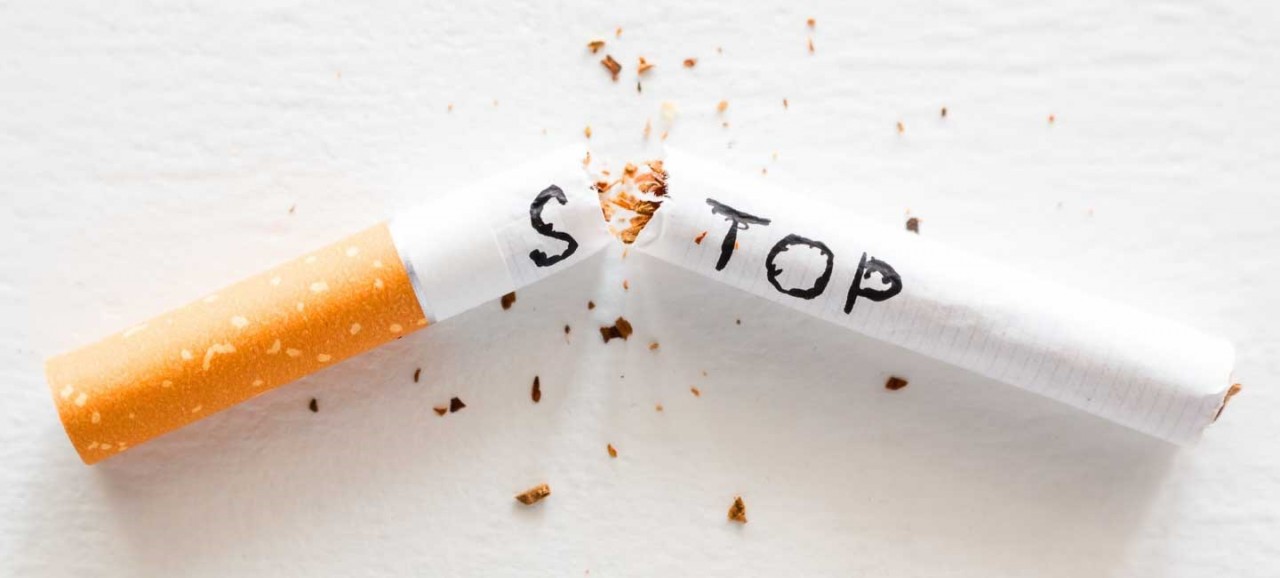For A Healthy Life: How To Recognize And Prevent Stroke
What can you do to prevent stroke? Age makes us more susceptible to having a stroke, as does having a mother, father, or other close relative who has had a stroke.
You can't reverse the years or change your family history, but there are many other stroke risk factors that you can control—provided that you're aware of them. Knowledge is power. If you know that a particular risk factor is sabotaging your health and predisposing you to a higher risk of stroke, you can take steps to alleviate the effects of that risk.
What is a stroke?
 |
| Photo: Getty Images |
A stroke, sometimes called a brain attack, occurs when something blocks blood supply to part of the brain or when a blood vessel in the brain bursts.
In either case, parts of the brain become damaged or die. A stroke can cause lasting brain damage, long-term disability, or even death.
The brain controls our movements, stores our memories, and is the source of our thoughts, emotions, and language. The brain also controls many functions of the body, like breathing and digestion.
To work properly, your brain needs oxygen. Your arteries deliver oxygen-rich blood to all parts of your brain. If something happens to block the flow of blood, brain cells start to die within minutes, because they can’t get oxygen. This causes a stroke.
Different types of stroke
 |
| Photo: UNC Health Talk |
Ischemic stroke
Most strokes are ischemic strokes. An ischemic stroke occurs when blood clots or other particles block the blood vessels to the brain.
Fatty deposits called plaque can also cause blockages by building up in the blood vessels.
Hemorrhagic stroke
A hemorrhagic stroke happens when an artery in the brain leaks blood or ruptures (breaks open). The leaked blood puts too much pressure on brain cells, which damages them.
High blood pressure and aneurysms—balloon-like bulges in an artery that can stretch and burst—are examples of conditions that can cause a hemorrhagic stroke.
Transient ischemic attack (TIA)
A transient ischemic attack (TIA) — sometimes known as a ministroke — is a temporary period of symptoms similar to those in a stroke. A TIA doesn't cause permanent damage. A TIA is caused by a temporary decrease in blood supply to part of the brain, which may last as little as five minutes.
Like an ischemic stroke, a TIA occurs when a clot or debris reduces or blocks blood flow to part of the nervous system.
Seek emergency care even if you think you've had a TIA because your symptoms got better. It's not possible to tell if you're having a stroke or TIA based only on the symptoms. If you've had a TIA, it means you may have a partially blocked or narrowed artery leading to the brain. Having a TIA increases your risk of having a full-blown stroke later.
Symptoms of stroke
 |
| Photo: Getty Images |
If you or someone you're with may be having a stroke, pay particular attention to the time the symptoms began. Some treatment options are most effective when given soon after a stroke begins.
Signs and symptoms of stroke include:
- Trouble speaking and understanding what others are saying. You may experience confusion, slur words or have difficulty understanding speech.
- Paralysis or numbness of the face, arm or leg. You may develop sudden numbness, weakness or paralysis in the face, arm or leg. This often affects just one side of the body. Try to raise both your arms over your head at the same time. If one arm begins to fall, you may be having a stroke. Also, one side of your mouth may droop when you try to smile.
- Problems seeing in one or both eyes. You may suddenly have blurred or blackened vision in one or both eyes, or you may see double.
- Headache. A sudden, severe headache, which may be accompanied by vomiting, dizziness or altered consciousness, may indicate that you're having a stroke.
- Trouble walking. You may stumble or lose your balance. You may also have sudden dizziness or a loss of coordination.
Risk factors
Many factors can increase the risk of stroke. Potentially treatable stroke risk factors include:
Lifestyle risk factors
- Being overweight or obese
- Physical inactivity
- Heavy or binge drinking
- Use of illegal drugs such as cocaine and methamphetamine
Medical risk factors
- High blood pressure
- Cigarette smoking or secondhand smoke exposure
- High cholesterol
- Diabetes
- Obstructive sleep apnea
- Cardiovascular disease, including heart failure, heart defects, heart infection or irregular heart rhythm, such as atrial fibrillation
- Personal or family history of stroke, heart attack or transient ischemic attack
- COVID-19 infection
Other factors associated with a higher risk of stroke include:
- Age — People age 55 or older have a higher risk of stroke than do younger people.
- Race or ethnicity — African Americans and Hispanics have a higher risk of stroke than do people of other races or ethnicities.
- Sex — Men have a higher risk of stroke than do women. Women are usually older when they have strokes, and they're more likely to die of strokes than are men.
- Hormones — Use of birth control pills or hormone therapies that include estrogen increases risk.
How to prevent stroke
1. Choose healthy foods and drinks
 |
| Photo: Kent |
Choosing healthy meal and snack options can help you prevent stroke. Be sure to eat plenty of fresh fruits and vegetables.
Eating foods low in saturated fats, trans fat, and cholesterol and high in fiber can help prevent high cholesterol. Limiting salt (sodium) in your diet can also lower your blood pressure. High cholesterol and high blood pressure increase your chances of having a stroke.
A diet containing five or more daily servings of fruits or vegetables may reduce the risk of stroke. The Mediterranean diet, which emphasizes olive oil, fruit, nuts, vegetables and whole grains, may be helpful.
2. Lose weight
 |
| Photo: Healthline |
Obesity, as well as the complications linked to it (including high blood pressure and diabetes), raises your odds of having a stroke. If you're overweight, losing as little as 10 pounds can have a real impact on your stroke risk.
Your goal: While an ideal body mass index (BMI) is 25 or less, that may not be realistic for you. Work with your doctor to create a personal weight loss strategy.
How to achieve it:
- Try to eat no more than 1,500 to 2,000 calories a day (depending on your activity level and your current BMI).
- Increase the amount of exercise you do with activities like walking, golfing, or playing tennis, and by making activity part of every single day.
3. Exercise more
 |
| Photo: Getty Images |
Aerobic exercise reduces the risk of stroke in many ways. Exercise can lower blood pressure, increase the levels of good cholesterol, and improve the overall health of the blood vessels and heart. It also helps you lose weight, control diabetes and reduce stress. Gradually work up to at least 30 minutes of moderate physical activity — such as walking, jogging, swimming or bicycling — on most, if not all, days of the week.
Exercise contributes to losing weight and lowering blood pressure, but it also stands on its own as an independent stroke reducer.
Your goal: Exercise at a moderate intensity at least five days a week.
How to achieve it:
- Take a walk around your neighborhood every morning after breakfast.
- Start a fitness club with friends.
- When you exercise, reach the level at which you're breathing hard, but you can still talk.
- Take the stairs instead of an elevator when you can.
- If you don't have 30 consecutive minutes to exercise, break it up into 10- to 15-minute sessions a few times each day.
4. Drinking alcohol in moderation, if at all
 |
| Photo: Getty Images |
Heavy alcohol consumption increases the risk of high blood pressure, ischemic strokes and hemorrhagic strokes. Alcohol may also interact with other drugs you're taking. However, drinking small to moderate amounts of alcohol, such as one drink a day, may help prevent ischemic stroke and decrease the blood's clotting tendency. Talk to your doctor about what's appropriate for you.
Drinking a little alcohol, such as an average of one per day, is okay. Once you start drinking more than two drinks per day, your risk goes up very sharply.
Your goal: Don't drink alcohol or do it in moderation.
How to achieve it:
- Have no more than one glass of alcohol a day.
- Consider red wine as your first choice, which some studies suggest might help prevent heart disease and stroke.
- Watch your portion sizes. A standard-sized drink is a 5-ounce glass of wine, 12-ounce beer, or 1.5-ounce glass of hard liquor.
5. Control diabetes
If your doctor thinks you have symptoms of diabetes, he or she may recommend that you get tested. If you have diabetes, check your blood sugar levels regularly.
Talk with your health care team about treatment options. Your doctor may recommend certain lifestyle changes, such as getting more physical activity or choosing healthier foods. These actions will help keep your blood sugar under good control and help lower your risk for stroke.
6. Control blood pressure
High blood pressure usually has no symptoms, so be sure to have it checked on a regular basis. Talk to your health care team about how often you should check your levels. You can check your blood pressure at home, at a doctor’s office, or at a pharmacy.
If you have high blood pressure, your doctor might prescribe medicine, suggest some changes in your lifestyle, or recommend that you choose foods with lower sodium (salt).
7. Quit smoking
 |
| Photo: Moffitt Cancer Center |
Smoking accelerates clot formation in a couple of different ways. It thickens your blood, and it increases the amount of plaque buildup in the arteries. Along with a healthy diet and regular exercise, smoking cessation is one of the most powerful lifestyle changes that will help you reduce your stroke risk significantly.
Your goal: Quit smoking.
How to achieve it:
- Ask your doctor for advice on the most appropriate way for you to quit.
- Use quit-smoking aids, such as nicotine pills or patches, counseling, or medicine.
- Don't give up. Most smokers need several tries to quit. See each attempt as bringing you one step closer to successfully beating the habit.
8. Treating obstructive sleep apnea (OSA)
Your doctor may recommend a sleep study if you have symptoms of OSA — a sleep disorder that causes you to stop breathing for short periods repeatedly during sleep. Treatment for OSA includes a device that delivers positive airway pressure through a mask to keep the airway open while you sleep.
 | Top 7 Best Exercises That You Can Do In The Park People often go to the gym to have exercises, but it is not always the only option available. You can turn the park into your ... |
 | Eating Healthy: 10 Tips For Healthier Life Living and eating a healthy lifestyle is essential, but it is also not easy to follow. In the article below, these tips will show you ... |
 | Great Habits For You To Enjoy A Healthy, Happy Summer Summer is when you spend your time enjoying different outdoor activities, going on vacations, and relaxing. These habits will keep you healthy and happy during ... |
Recommended
 Handbook
Handbook
Vietnam Moves Up 8 Places In World Happiness Index
 Handbook
Handbook
Travelling Vietnam Through French Artist's Children Book
 Multimedia
Multimedia
Vietnamese Turmeric Fish among Best Asian Dishes: TasteAtlas
 Handbook
Handbook
From Lost to Found: German Tourist Thanks Vietnamese Police for Returning His Bag
Popular article
 Handbook
Handbook
Prediction and Resolution for the Disasters of Humanity
 Handbook
Handbook
16 French Films To Be Shown For Free During Tet Holiday In Vietnam
 Handbook
Handbook
Unique Cultural and Religious Activities to Welcome Year of the Snake
 Handbook
Handbook







